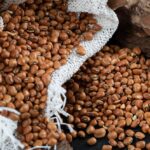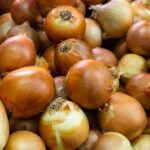Smut disease, caused by the fungus Sporisorium scitamineum, is a significant threat to sugarcane production worldwide. It affects plant growth, reduces yield, and can lead to significant economic losses for farmers. Early detection of smut disease is crucial for effective management and control. Here are ten early signs to watch for that indicate your sugarcane may be affected by smut disease:
- Stunted Growth: Infected sugarcane plants may exhibit stunted growth compared to healthy plants. They may appear smaller in size and fail to reach their expected height or maturity.
- Delayed Shoot Emergence: Sugarcane affected by smut disease may show delayed or uneven emergence of shoots from the soil. Some shoots may emerge later than others, leading to uneven stand establishment.
- Distorted Leaves: Leaves of infected sugarcane plants may exhibit abnormal growth patterns, including curling, twisting, or distortion. These deformities can affect photosynthesis and nutrient uptake, further impacting plant growth and yield.
- Yellowing or Chlorosis: Infected sugarcane leaves may display yellowing or chlorosis, indicating nutrient deficiencies or impaired photosynthesis due to smut disease. This discoloration may occur in patches or spread throughout the entire plant canopy.
- Streaks or Lesions: Look for dark streaks or lesions on the leaves, stems, or buds of sugarcane plants. These lesions may appear water-soaked initially but can develop into dark, powdery masses of spores characteristic of smut disease.
- Abnormal Growth Structures: Smut disease can cause the formation of abnormal growth structures called galls or tumors on infected sugarcane plants. These structures may develop on stems, leaves, or buds and can vary in size and shape.
- Reduced Internode Length: Infected sugarcane plants may exhibit shorter internode lengths compared to healthy plants. This reduction in internode length can affect plant height, biomass accumulation, and ultimately, yield potential.
- Premature Flowering: Smut disease can induce premature flowering in sugarcane plants, leading to the production of small, deformed inflorescences or seed heads. Premature flowering reduces sucrose accumulation in the stalks and lowers sugar yield.
- Poor Root Development: Check the roots of your sugarcane plants for signs of poor development, including stunted growth, discoloration, or decay. Smut disease can impair root function and reduce nutrient and water uptake, further compromising plant health.
- Fungal Spores: In advanced stages of infection, you may observe the presence of black, powdery fungal spores on the surface of infected plant tissues. These spores are a characteristic feature of smut disease and indicate active fungal reproduction.
Management and Control Strategies
Early detection and prompt management are essential for controlling smut disease in sugarcane. Here are some strategies to consider:
- Crop Rotation: Rotate sugarcane with non-host crops to break the disease cycle and reduce inoculum buildup in the soil.
- Sanitation: Remove and destroy infected plant material to prevent the spread of smut disease to healthy plants.
- Resistant Varieties: Plant smut-resistant sugarcane varieties to reduce the risk of infection and minimize yield losses.
- Chemical Control: Apply fungicides at the appropriate times to protect susceptible sugarcane crops from smut disease infection. Consult with agricultural experts for recommendations on fungicide selection and application.
- Cultural Practices: Implement cultural practices such as proper irrigation, fertilization, and weed control to promote healthy plant growth and enhance resistance to smut disease.
- Monitoring: Regularly monitor sugarcane fields for signs of smut disease and take corrective action promptly to prevent further spread.
By familiarizing yourself with these early signs of smut disease and implementing effective management strategies, you can minimize the impact of this devastating fungal disease on your sugarcane crop and protect your yield and profitability. Early detection and proactive management are key to maintaining a healthy and productive sugarcane plantation.







